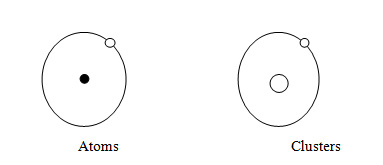Nanoparticles PPT Seminar and PDF Report
Also See: 210+ Class 12 Chemistry Project Topics
Free Download Nanoparticles Seminar PPT and PDF Report: Nanoparticles are the easiest form of structures which have the sizes in the range of nanometer. A nanoparticle is considered to a group of atoms which are bonded together and possess a structural radius of less than 100 nm. The nanoparticles include the following:
- Large molecules like hydrogen-bonded assemblies of water molecules and proteins
- Fullerenes
- Metal clusters
Nanoparticles are very common in nature and for example, the proteins are present in all the biological systems.
Also See: Physics Project Topics
Nanoparticles PPT Seminar and PDF Report
Physically Manufactures Nanoparticles:
The difference in the nanoparticles can be made between the hard matter nanoparticles which are called as nanoclusters and the soft nanoparticles which are Bioorganic and large molecules. Now, we are going to learn about the nanoclusters:
- Nanoclusters: A nanocluster is a particle which has a size in the range of nanometer and has equal subunits. The subunits can be atoms of a single element or many molecules or even consist of atoms of many elements in subunits with equal alloys. The nanocluster has the properties which are guided by the number of subunits they have. Due to this reason, they are seen as the intermediate stage between bulk material and single atom or molecule. If once the particles are made to the size of a nanocluster then the properties may vary with every addition of atom and with every subtraction of an atom.
- Size does matter: In this, we are going to know about the different parameters which are related to the size and those are as below:
- Geometric structure
- Electronic structure
- Jellium
- Optical properties
- Reactivity
- Melting temperatures
- Magnetic properties
- Geometric structure: The crystal structure of a big nanocluster is similar to the bulk structure of a material with slightly different lattice parameters. For example, the clusters of copper tend to have a structure of FCC.
- Electronic structure: The formation and abundances of big clusters are affected by the structural magic numbers. In the case of tiny clusters, the electronic structure of complete atoms is of much importance. In the clusters, the electronic magic numbers are observed.
- Jellium: In the theoretical modeling of nanoclusters, the jellium model has been utilized. The jellium model of clusters is explained in the below diagram:

Fig1: Jellium model of Clusters
What are the benefits of nanoparticles?
Have a look at the advantages of nanoparticles with proper explanation below:
- Nanoparticles helpful in revolutionizing an variety of things in the manufacturing areas.
- It possess with an solid set of insulating properties for paving the way for new techniques.
Content of the Seminar and PDF Report for Nanoparticles PPT
- Introduction
- Definition
- Classificaton Of Nanoparticles
- Advantages Of Nanoparticles
- Disadvantages Of Nanoparticles
- Preparation of polymeric Nanoparticles
- Evaluation of Nanoparticles
- Conclusion
- References
Here we are giving you Nanoparticles Seminar and PPT with PDF Report. All you need to do is just click on the download link and get it.
Nanoparticles PPT and Seminar Free Download
Nanoparticles PDF Report Free Download
It was all about Nanoparticles Seminar and PPT with PDF Report. If you liked it then please share it or if you want to ask anything then please hit comment button.


Leave a Reply